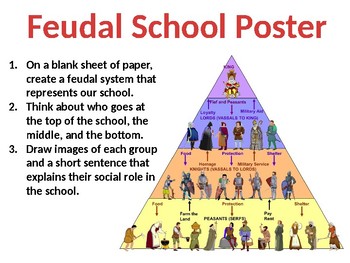



This provides great insight and allows you to see what mental models they hold, gauging understanding, preconceptions and starting points. Ask learners how they think the set up might be different? Make some predictions, draw a diagram perhaps. Now that you have provoked thought, built bothered-ness, made learners care… (call it what you will!) it’s time to rewind to the Middle Ages. What criteria have they used? They justify, argue and get fired up.Ĥ. Ask students to reach consensus and rank them. barista, barrister, cleaner, builder, hairdresser, doctor. In groups of three, issue learners with some cards to sort in terms of the ‘merits’ or otherwise of these roles e.g. Debates about equality and diversity may well ensue.ģ. Education often comes up in discussion as a catalyst for change. Give learners a big question to be thinking about: ‘Do we live in a meritocracy?’ This leads to further ongoing questions and debate….in theory we do, in practice there are barriers to this. Prompts have you heard of merits? Do you know any other -cracy words? I imagine they’d know democracy (You can have a lot of fun with this link: ) Make sure that they are clear that ‘-cracy’ means government, rule or influence. Then introduce the school organisational structure – what do they make of that?! What word best fits the organisational system?Ģ. 21st Century Jobs Card Sort (about 6 will do)ġ.4 white stickers with feudal labels or sugar paper tabards if preferred.1 paper crown (or more substantial if you like).William the Conqueror has a problem to solve! He is the King, but how best to organise everyone else? Taking a tiered approach here are your ingredients for success: Morris makes the continuing case for feudal deriving from the Medieval Latin feodum which was a parcel of land given to some knights for their service and so it fits to describe a society that was everywhere affected by the arrival of knights and castles. Bates suggests the word lordshipis more often used to describe changes in the way England’s aristocratic elite organised their powers. I’m all for a bit of etymology in the history classroom and teaching ‘The Feudal System’ lends itself well to that.
#FEUDALISM IN THE MIDDLE AGES LESSON PLAN FOR FOURTH GRADE HOW TO#
Here’s how to make it memorable, to build their sense of period and to inspire their curiosity about structures in society. The Feudal System is a window through which learners can understand so much about Norman England. If it’s time to refresh your teaching and build respect for the ‘inventive’, ‘highly organised’, ‘creative’ people alive in the era of the Battle of Hastings, this piece and associated references might provide some ideas. Building not just in the sense of undertaking the construction of magnificent cathedrals and impregnable castles made from stone, but building ways of organising life, faith, government and society. Those living in The Middle Ages were sophisticated people. The Norman Conquest marked the start of a new long evolutionary process.


 0 kommentar(er)
0 kommentar(er)
